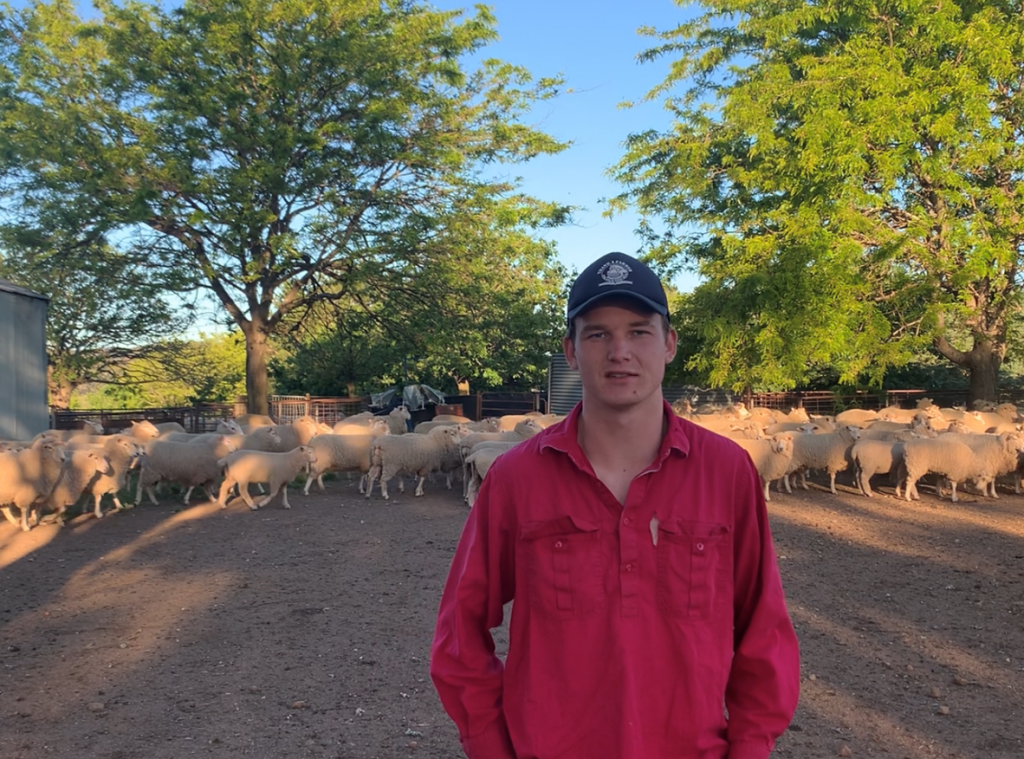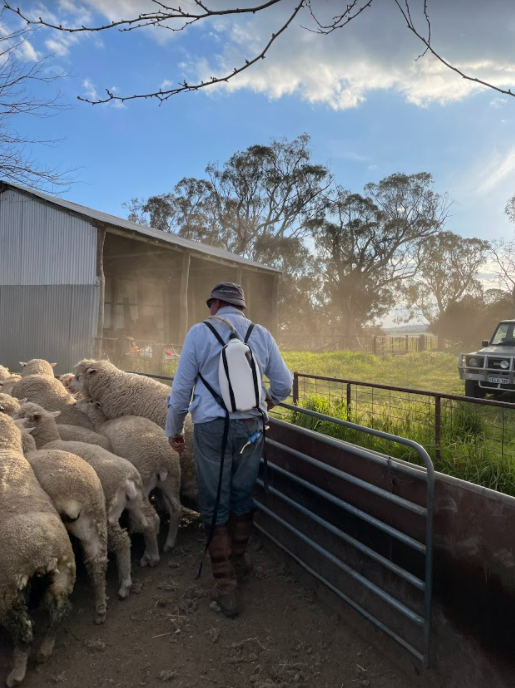Flyn joined Farmbot a little over a month ago in the inbound sales team and is already making an impact, helping farmers find solutions to suit their properties. Where were you born and bred? Flyn grew up on his family's farm Kirkdale, 20 km south of Goulburn, in NSW Southern Tablelands. What are you currently studying and what brought you to Farmbot? Flyn is currently completing his final year of a Bachelor of Science where he majors in animal production. This has led him to study everything from livestock and pasture management to production in feedlot, piggery and broiler systems, giving him an overview of different farms across Australia. What is the size of your family’s property and what do you run? Kirkdale is 3,500 acres with a carrying capacity of 3,000 ewes with lambs. The property is also currently running 175 head of Hereford cattle. What is the focus of your family's farm? The Kilby’s have traditionally run a fine merino wool enterprise, however have begun to diversify into the fat lamb market recently. This has been driven by high demands for meat and strong prices across the board, leading to them also beginning to opportunistically trade cattle. Why is water so important to you and your farm? Consistent with farms across Australia, water is essential for everything Flyn and his family do at Kirkdale. Their main source of water is a deep watering hole, with this quality water pumped, via windmill to a central feeder tank. This tank then services 12 troughs around the property, providing an alternative water source for livestock, particularly when dams begin to dry up in warmer months. But this system is not flawless, with the windmill system often being slow and unreliable, “We have had a lot of problems with pumping water through the windmill, it's often really slow. If we have a leak it can take a few days, or even up to a week to fill the tank back up once we’ve found the leak.” But as Flyn learnt in 2019, simply spotting the float on the top of a tank is not always an indicator of water level trends. “I was home alone in 2019 during the drought doing all the water checks. I checked the tank in the morning and everything seemed to be fine, the float was up. I checked it again in the evening and the float was still up. But the float had actually got stuck up, the tank was almost empty, the windmill had shut off. I had to go get the windmill going and start up the emergency pump to get water back up to the tank. By this time though, the troughs had run dry. Because it was mid-drought we had our lambs in a feedlot set up, no water in the troughs meant we almost lost some, we were very lucky we didn't and got water back to them in time.” Despite no lives being lost in the ordeal, the impact of this on livestock could extend beyond the time of problem, as severe stresses on the animal can have major impacts upon wool quality. “If sheep are exposed to severe stress, such as long periods of dehydration, they can produce breaks in the wool fiber. These breaks significantly decrease the value of the wool, making them unfit for commercial processing which could significantly impact on our bottom line. This risk makes water security even more of a focus for us, as issues with water availability for sheep can be detrimental to wool quality for long periods of time.” Flyn recognises that if he had Farmbot in place at the time, this could have been avoided completely, with real-time data alerting him on the fall in tank level, in a much more reliable fashion than the tank float. Why do you think technology adoption is so important in agriculture? And what type of technology have you got at your place? Flyn has always been interested in agritech and sees the industry as the solution to feeding the growing population with our current resources. “In this day and age with our growing population, farmers still have the same amount of resources. We need to shift in order to produce more food, more efficiently, and, importantly, this production needs to be sustainable. I believe the only way to reach these efficiencies is through agritech.” Flyn’s family started using AgriWebb six years ago, when such management tools were relatively new, and say it has been great with helping in stock and pasture management, paddock rest periods and keeping track of animal husbandry practices. The farm also has soil moisture probes installed by the Southern Tablelands Farming Association as well as solar panels as an alternative energy source. And after years of driving around checking that the windmill system is still running and the tanks are full, Flyn says that getting Farmbot solutions is a no brainer on Kirkdale and is well and truly in the pipeline. Interested in working at Farmbot? Click here to view our current vacancies.Meet Flyn Kilby

This, combined with his personal background growing up on a property near Goulburn has allowed Flyn to chat to and better understand producers' needs from all corners of Australia, which is integral for this inbound sales role at Farmbot.
“I have always been on the other end of the phone, doing the hands on work out on the farm. It’s nice to be able to help farmers find solutions to their problems, particularly through agritech, as it has always been an interest of mine. It is so interesting to hear customer stories and how they manage their water, it’s something about the role I really enjoy.”
Ensuring this system is working becomes even more of a focus for Flyn and his family during the summer months as livestock water consumption doubles, with the average ewe drinking up to 10L a day. This demand forced manual tank checks to be carried out three to four times a day during the drought, taking up valuable time and manpower.

